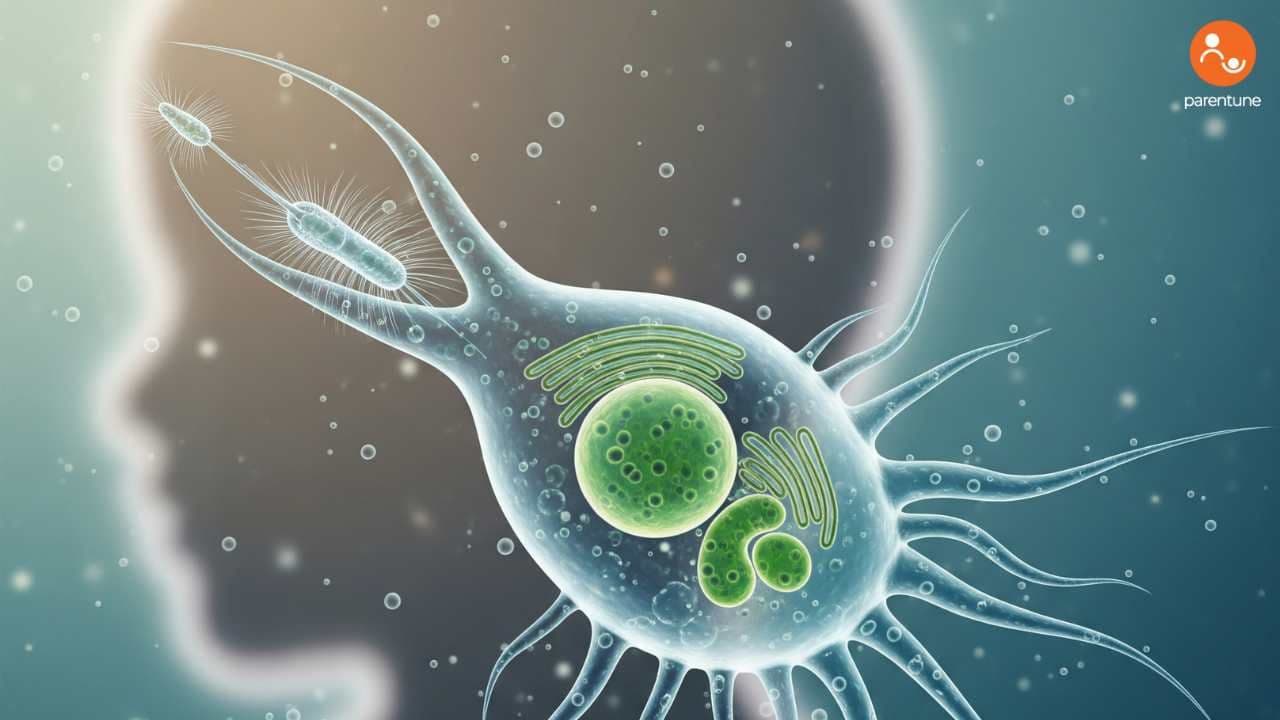safety
Parents Beware: Experts Are Warning About Brain-Eating Amoeba Cases in Children

Published: 18/08/25
Updated: 18/08/25
As parents, we try to do everything to keep our kids safe. From preparing the healthiest meal to ensuring they wash their hands to avoid any contact with harmful bacteria. Even after doing your best, you realise these dangers come from places you never imagined. Who would ever think that an amoeba from fresh water would trouble children?
Health experts are alerting about Naegleria fowleri which we know as the brain-eating amoeba. The name sounds like a horror movie and it is nothing less than that. Children are getting affected with this dangerous thing coming up.
What Is the Brain-Eating Amoeba?
Naegleria fowleri is a microscopic organism that lives in warm freshwater. The strange thing about it is that it does not harm you if you swallow it. It starts doing its job if contaminated water goes up the nose and then it travels to the brain. In medical terms, they call it Primary Amebic Meningoencephalitis (PAM).
This infection is extremely rare, but when it happens, it can be deadly. Children who often play in water and do swimming are at higher risk.
Doctor Q&As from Parents like you
You may also like to read:
How Amoeba Enter the Body?
Cases often rise in the summer season as warm temperatures help amoeba survive. This usually happens because children spend more time swimming in lakes and rivers. When kids are at the pool, they tend to dive and jump, which increases the chances of water getting into the nose.
Symptoms Should Parents Watch Out For?
Early symptoms usually start within one week after exposure and can look like common illnesses, which makes it tricky to detect. Some of the common symptoms include
- Headache
- Fever
- Nausea and vomiting
- Stiff neck
- Sensitivity to light
If your child develops these symptoms after swimming, you need to seek medical assistance immediately. The infection spreads quickly and you might not realise till it gets worse.
How Can Parents Protect Their Kids From Brain-Eating Amoeba?
- Don’t let children swim in warm freshwater during hot weather. Children should avoid swimming in lakes or rivers.
- Use nose clips while swimming. Also keep your child’s head above water to avoid water getting into the nose.
- Children like to dig the bottom of lakes and rivers. These are the places where the amoeba is more likely to be present.
- Avoid going in public waterparks as these places are usually not very hygienic.
- Make sure the swimming pools that your child is using are well-chlorinated.
By taking a few precautions and staying alert to symptoms, parents can let their children enjoy water activities without unnecessary panic.
Be the first to support
Be the first to share
Related Blogs & Vlogs
No related events found.